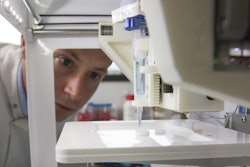
A recent Lund University article highlighted a biomedical engineering researcher who is studying dolphins in hopes of improving ultrasounds. Josefin Starkhammar discovered that the ultrasounds emitted by dolphins for echolocation actually consist of two slightly staggered signals that serve different purposes.
She explains, “high and low frequencies are useful for different things. Sounds with low frequencies spread further under water, whereas sounds with high frequencies can provide more detailed information on the shape of the object.”
Starkhammar worked with a mathematical statistics professor to develop a mathematical algorithm based on her findings that was successfully used to read the overlapping signals. It helped her to better understand dolphin communication, but more importantly can be used to improve medical ultrasounds by measuring the thickness of organ membranes deeper inside the body.





















